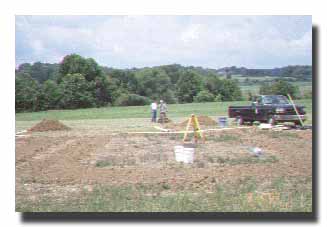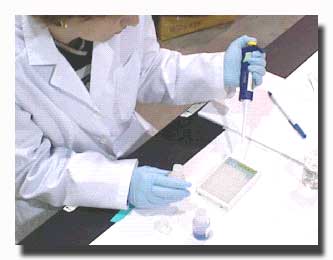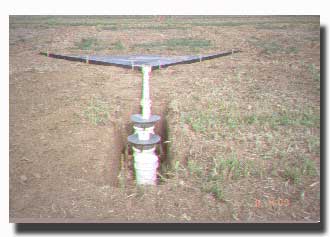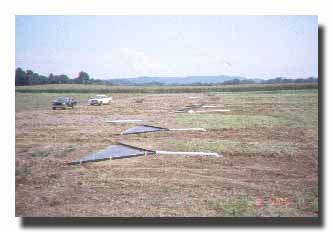
back to: Research Program Information
Quantifying and Minimizing 17b-Estradiol Discharges from Dairy and Swine WastePersonnel: D. Raj Raman, Assistant Professor, Agricultural & Biosystems Engineering; Michael D. Mullen , Associate Professor, Plant and Soil Sciences ; Alice C. Layton, Research Assistant Professor, Center for Environmental Biotechnology; Robert T. Burns, Associate Professor, Agricultural & Biosystems Engineering; Gary S. Sayler, Professor Microbiology, Director, Center for Environmental Biotechnology; Lara B. Moody, Research Associate, Agricultural & Biosystems Engineering; A. Renea Dyer, M.S. candidate, Biosystems Engineering Technology Program.

Hormonal pollution of the environment, by compounds such as the potent 17b-estradiol, has been implicated in human and wildlife health problems. However, little is known regarding the environmental impact of hormones originating from animals. Such knowledge is timely.
Current animal waste regulations are driven solely by concerns about nutrients (notably P and N), pathogens, and organic matter, with no consideration given to the impact of these regulations on environmental estrogen loads.
Previous work examining livestock estrogen discharges has focused on poultry waste; little has been reported regarding the potentially large environmental loadings of estrogen from dairy operations. To address the gap in knowledge, this work has four objectives.

First, quantify the conservation of estrogens in full-scale dairy waste storage systems. Specifically, compare lagoons and dry-stacks for their ability to conserve applied estrogen loads.

Second, measure estrogen concentration in runoff from plots fertilized with liquid dairy waste. Specifically, document the potential environmental significance of these losses and determine how waste phase affects off-site movement of estrogens.
Third, determine the efficacy of high-rate anaerobic digestion for degrading estrogens. Specifically, establish the potential of this technology to reduce environmental estrogen loads, and elucidate bioreactor operating conditions that maximize estrogen degradation. 
Fourth, determine the fate of 17b-estradiol in dry stacks, lagoons, high-rate anaerobic digesters, and soil. Specifically, use radiolabeled estrogens in lab studies to establish the extent to which microbes in these systems can mineralize estrogens.
Posted October 29, 2000 by: Lindsey Harrison